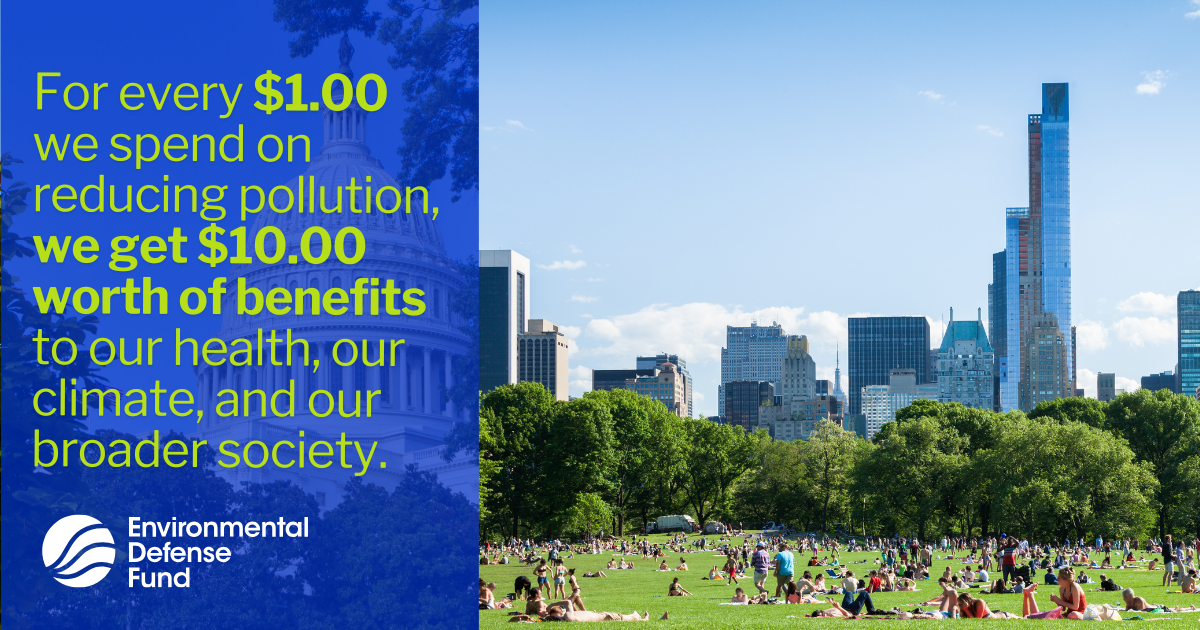The Clean Air Act Amendments: Good for Our Health AND Our Economy
The Clean Air Act and its amendments prevent millions of premature deaths, significantly reduce illnesses, and save trillions of dollars for American families. But those in Congress who are working to stall EPA actions still claim that Clean Air Act regulations are too costly. Fortunately there’s some new and conclusive evidence to show that they’re wrong.
The EPA’s just-released cost-benefit analysis of the 1990 Clean Air Act Amendments leaves no room for argument: we simply cannot afford a world without regulations on the harmful pollution that the Clean Air Act is designed to fight.
This comes as no surprise. The Clean Air Act has been saving lives, improving the health of American children, and saving us trillions of dollars for years now. But this report is a new and definitive confirmation of just how critical this law is to the health of the American people — and to our economy.
EPA sets the gold standard in economic modeling with this report. It provides an excellent, no-nonsense analysis of both the costs of complying with the Clean Air Act Amendments and the benefits. Benefits are the clear winner. From 1990 to 2020, they manifest in the form of avoided premature deaths, reduction in illnesses and associated health care costs, and improved ecological and welfare impacts (like increased agricultural yields and better visibility conditions).
The report finds that, at the central estimate, and after taking costs into account, the net benefits of the Clean Air Act Amendments are $12 trillion in present value. Yes, that’s TRILLION.
The report also finds that the benefits of the Clean Air Act outweigh the costs by a factor of more than 30 to one. Let me say that again: 30 to one. And that’s a more modest estimate; the report’s high benefits estimate exceeds costs by 90 times.
These estimates don’t even account for some benefits that are more difficult to monetize, such as health effects from air toxics, and chronic respiratory diseases other than chronic bronchitis. They also don’t include the pain and suffering associated with illnesses, so the benefits estimate should be seen as conservative.
Let’s look at one of the most important results: health impacts. Last year alone, the Clean Air Act Amendments saved more than 160,000 lives, prevented more than 85,000 emergency room visits, prevented millions of cases of respiratory problems (including bronchitis and asthma), enhanced productivity by preventing 13 million lost workdays, and prevented 3.2 million lost school days (just to name a few of the benefits).
In the year 2020, the Clean Air Act Amendments are projected to prevent more than 230,000 early deaths and provide benefits reaching approximately $2 trillion. All of which makes it mind-boggling that opponents in Congress continue to push back against this successful law.
The enormous benefits of the Clean Air Act are nothing new. EPA’s earlier cost-benefit analysis of the law, from the years 1970 to 1990, showed that the net benefits in present value over the period were nearly $22 trillion, and that the benefits outweighed the costs by 40 to one.
Here’s more good news: protecting children from neurotoxins now will give us workers with higher IQs later — and that’s something that also turns out to come with real economic benefits. The latest study by Harvard’s Dale Jorgenson and his co-authors shows that the Clean Air Act has boosted productivity and growth: Gross Domestic Product in 2010 is up to 1.5% higher than it would have been without the Clean Air Act.
The bottom line is that the Clean Air Act and its Amendments have left Americans enormously better off – in terms of health, productivity, and economic growth. Why stop now?












